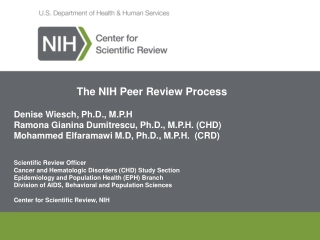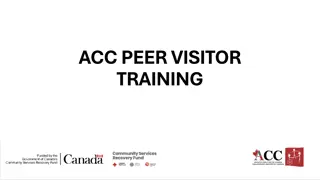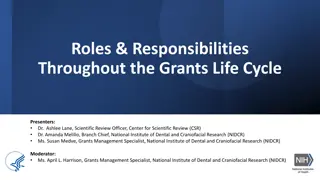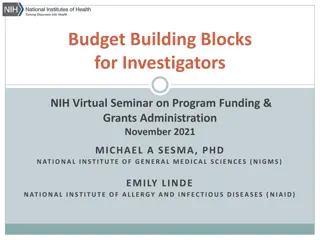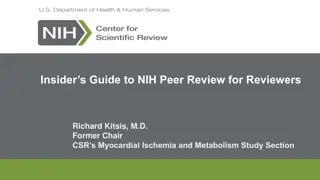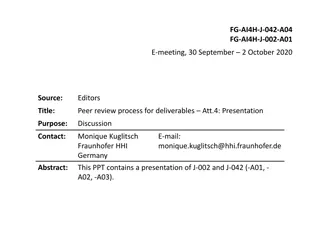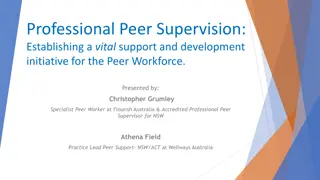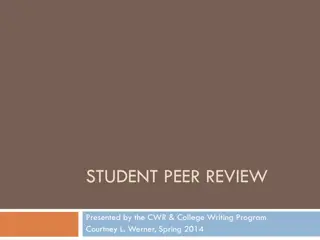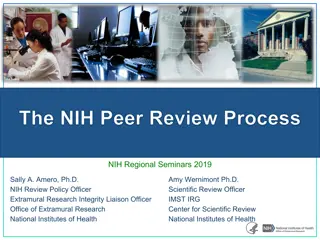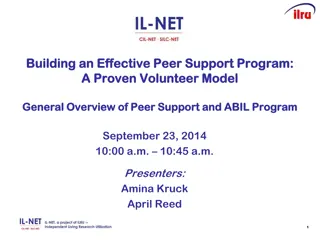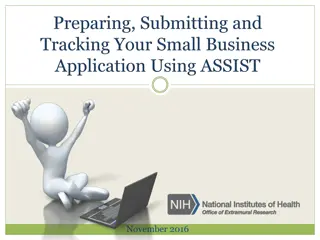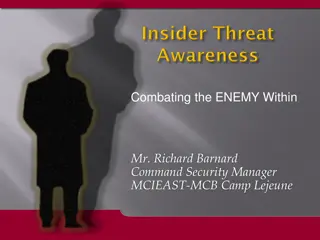Insider Guide to NIH Peer Review Process for Applicants
Learn valuable insights and expert tips on navigating the NIH peer review process from the Acting Director of CSR Division of Neuroscience, Development, and Aging. Discover key factors for a successful application, including understanding review criteria, developing your research idea, and effectively communicating your project's significance. Get started on the right track with advice on preparing your application and engaging with NIH program staff and colleagues.
Download Presentation

Please find below an Image/Link to download the presentation.
The content on the website is provided AS IS for your information and personal use only. It may not be sold, licensed, or shared on other websites without obtaining consent from the author.If you encounter any issues during the download, it is possible that the publisher has removed the file from their server.
You are allowed to download the files provided on this website for personal or commercial use, subject to the condition that they are used lawfully. All files are the property of their respective owners.
The content on the website is provided AS IS for your information and personal use only. It may not be sold, licensed, or shared on other websites without obtaining consent from the author.
E N D
Presentation Transcript
Insider Guide to Peer Review for Applicants Dr. Valerie Durrant Acting Director CSR Division of Neuroscience, Development and Aging
I wish I knew then what I know now. Collective wisdom from experts involved in the process Study section chairs Reviewers NIH staff
What You Need to Know about NIH Review Scientific review is independent from funding decisions Review panels are broad and interdisciplinary www.csr.nih.gov/rosters Review criteria for research applications: Significance, Investigator, Innovation, Approach, Environment = Overall Impact
Getting Started Do your homework Talk to NIH program staff about ideas and mechanisms Ask successful applicants at your institution to share their experiences Review instructions, deadlines, and guidelines Develop a one-page summary and discuss with: Experienced investigators at your institution/colleagues Program officers in the NIH institutes
Getting Started Develop your idea/project Start with significance Current controversies or issues of importance to the field Bring something new to the table Broad enough to be of interest to general field Keep it focused and feasible Write about what you know
Getting Started You cannot disguise a weak idea with great grantsmanship But bad grantsmanship can disguise a good idea.
Writing Your Application Sell your project How will your study advance the field? What do we currently know and what will we know at the end? Remember: Significance of your research question/application is not the same as significance of the research area.
Writing Your Application Know your audience: Reviewers Broad range of scientific expertise and background Experts in the field, but maybe not in exact area of your application
Writing Your Application Articulate each aim and how it advances the overall project Tell reviewers: What you will do Why it is important How you will do it How each piece contributes to the whole
Writing Your Application Provide enough detail to show feasibility Rationale Methods Preliminary Data Address potential pitfalls and challenges in the approach
Writing Your Application Help reviewers do their work Clearly organize your ideas and application Be succinct Provide brief summaries of critical elements (review criteria) Keep it readable Proofread, proofread, proofread!
Be Persistent Revise and resubmit Don t panic if you are not funded or discussed Carefully read critiques Seek guidance from program directors
Insiders Guide to Peer Review for Applicants http://www.csr.nih.gov/applicantResources/Insider
Want More Information? A cartoon image of a laptop with a keyboard (Source: Microsoft Office). On the screen is the following: www.csr.nih.gov/links Useful CSR/NIH Links for Applicants (CSR/NIH) An image of colored penciles (Source Microsoft Office) and the text (CSR/NIH) Get More NIH Grant Writing Tips: http://grants.nih.gov/grants/grant_tips.htm.


